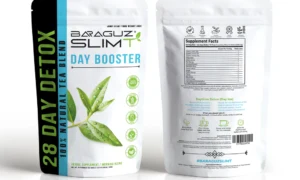Selecting the perfect bathroom vanity involves more than just considering its style and size. The materials used in crafting the vanity play a crucial role in determining its durability, aesthetics, and overall performance in a high-moisture environment. In this comprehensive guide, we’ll explore various bathroom vanity materials, providing insights to help you make an informed decision that aligns with your style preferences and practical needs.
1. Introduction: Crafting a Functional and Stylish Bathroom Space
A bathroom vanity serves as the focal point of the bathroom, combining functionality with aesthetics. Choosing the right materials ensures that your vanity not only complements the overall design but also withstands the challenges of a moisture-prone environment.
2. Popular Bathroom Vanity Materials
2.1. Solid Wood
Solid wood is a classic and timeless choice for bathroom vanities. It exudes warmth and natural beauty, creating a cozy and inviting atmosphere. Woods like oak, maple, and cherry are popular options. Ensure the wood is properly sealed or treated to withstand moisture.
2.2. Plywood
Plywood is a versatile and cost-effective material for bathroom vanities. It consists of layers of wood veneer glued together, providing strength and durability. Look for plywood with water-resistant properties and consider finishes that enhance moisture resistance.
2.3. MDF (Medium Density Fiberboard)
MDF is an engineered wood product made from wood fibers and resin. It offers a smooth surface that is easy to paint or finish. While MDF is susceptible to moisture, choosing a bathroom-grade MDF with water-resistant properties can mitigate potential issues.
2.4. Engineered Stone
Engineered stone, such as quartz, is a durable and low-maintenance option for vanity countertops. It is resistant to stains, scratches, and moisture. Engineered stone comes in a variety of colors and patterns, allowing for a customized and modern look.
2.5. Natural Stone
Natural stone, like granite or marble, adds a luxurious and elegant touch to bathroom vanities. While visually stunning, natural stone requires proper sealing to protect against moisture. It’s essential to follow recommended maintenance routines to preserve its beauty.
2.6. Stainless Steel
Stainless steel provides a sleek and contemporary appearance for bathroom vanities. It is resistant to corrosion and moisture, making it an excellent choice for a modern and hygienic bathroom environment. Stainless steel is easy to clean and maintain.
2.7. Glass
Glass vanities create a visually light and airy atmosphere. Tempered glass, in particular, is a durable option that can withstand daily use. It is resistant to moisture and easy to clean. Consider glass vanities for a modern and minimalist bathroom aesthetic.
3. Considerations for Material Selection
3.1. Moisture Resistance
Given the high-moisture nature of bathrooms, prioritize materials with excellent moisture resistance. Properly sealed wood, water-resistant plywood, and engineered materials like quartz are ideal choices to prevent damage from humidity and splashes.
3.2. Durability
Consider the durability of the materials, especially in frequently used bathrooms. Materials like stainless steel and engineered stone are known for their resilience against wear and tear, ensuring a long-lasting and low-maintenance vanity.
3.3. Style and Aesthetics
The chosen material should align with your desired bathroom style. Whether you prefer the warmth of wood, the modern appeal of glass and stainless steel, or the luxury of natural stone, select a material that complements the overall design scheme.
3.4. Maintenance Requirements
Evaluate the maintenance needs of each material. Some materials, like solid wood, may require periodic sealing, while others, such as quartz or tempered glass, are relatively low-maintenance. Choose a material that fits your lifestyle and maintenance preferences.
4. Conclusion: Crafting Your Perfect Bathroom Retreat
In conclusion, selecting the right materials for your bathroom vanity is a crucial step in creating a functional and stylish bathroom retreat. By considering factors such as moisture resistance, durability, style, and maintenance requirements, you can choose materials that enhance the aesthetics and longevity of your bathroom vanity.
FAQs
- Can solid wood vanities withstand bathroom moisture?
- Solid wood vanities can withstand bathroom moisture if properly sealed or treated. Choosing hardwoods with natural resistance to moisture, such as teak or cedar, and applying a protective finish helps enhance durability.
- Is plywood a suitable material for bathroom vanities?
- Yes, plywood is a suitable material for bathroom vanities. Look for water-resistant or marine-grade plywood to ensure durability in a high-moisture environment. Proper finishing and sealing contribute to its longevity.
- What are the benefits of engineered stone for bathroom countertops?
- Engineered stone, like quartz, offers benefits such as durability, resistance to stains and scratches, and a wide range of customizable colors and patterns. It is non-porous, making it highly resistant to moisture and bacteria growth.
- Can glass vanities withstand daily use in a bathroom?
- Yes, tempered glass vanities are designed to withstand daily use in a bathroom. Tempered glass is strong and resistant to impact, making it a durable choice. It is also easy to clean and maintain.
- Are there specific cleaning requirements for stainless steel vanities?
- Stainless steel vanities are easy to clean with mild soap and water. To maintain their shine, avoid abrasive cleaners that could scratch the surface. Stainless steel is naturally resistant to corrosion and moisture.





















































